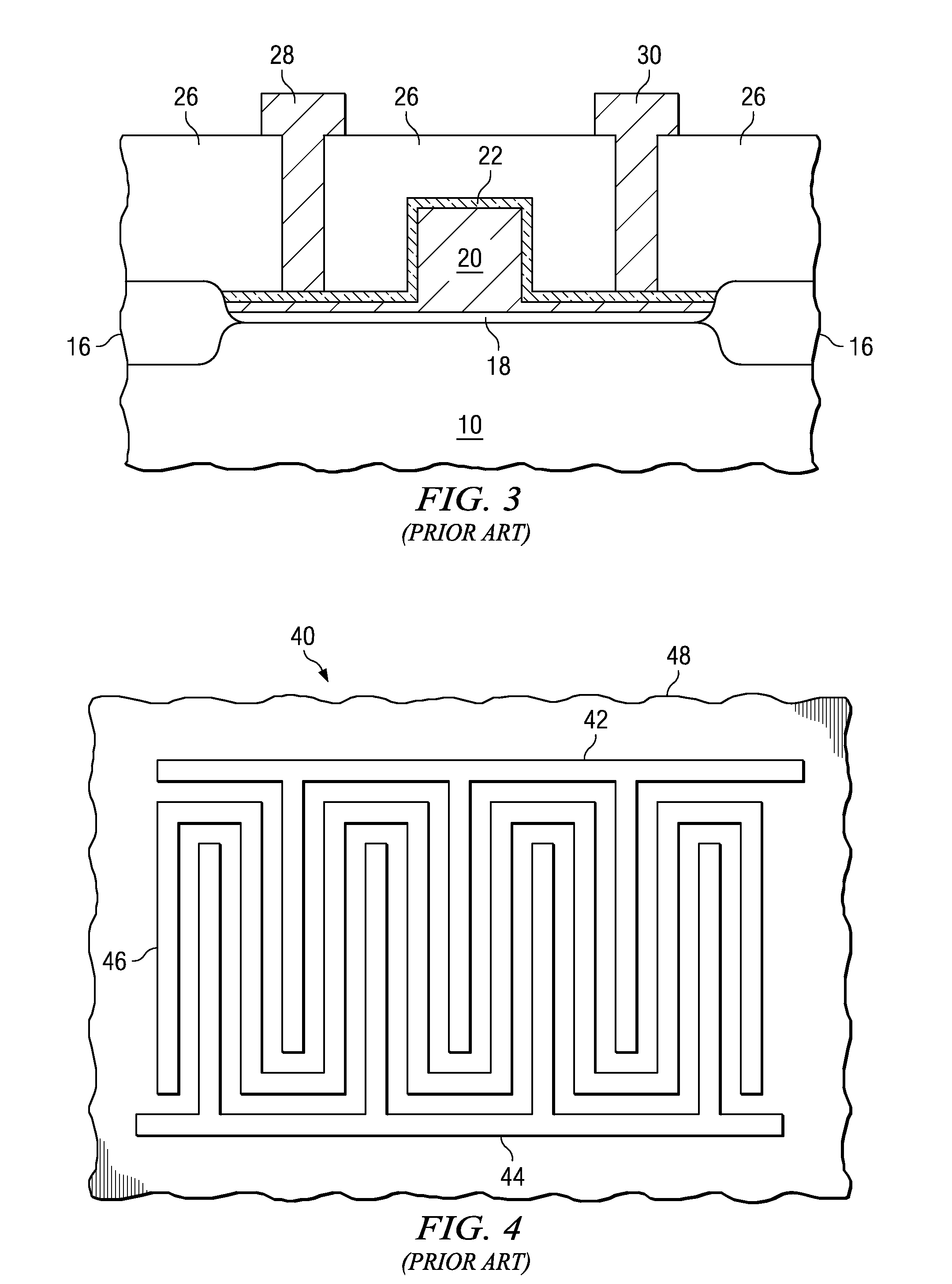Simple and effective method to detect poly residues in locos process
a poly residue and locos technology, applied in semiconductor/solid-state device testing/measurement, semiconductor/solid-state device details, instruments, etc., can solve the problems of increasing the difficulty of photolithography formation of increasingly narrow control gates across larger substrates, reducing the size of completed devices, and difficult to complete etching in narrow regions without over-etching the wide regions
- Summary
- Abstract
- Description
- Claims
- Application Information
AI Technical Summary
Benefits of technology
Problems solved by technology
Method used
Image
Examples
Embodiment Construction
[0009]One exemplary embodiment of a test structure for a semiconductor device includes at least a portion of a semiconductor wafer and a metal oxide semiconductor (MOS) device having a source, a drain, and a transistor gate. The test structure further includes a one time programmable floating gate transistor having a source, a drain, and a floating gate. Also included are various probe contacts, with a first probe contact electrically coupled with the sources of both the MOS device and the floating gate device, a second probe contact electrically coupled with the drain of the MOS device, and a third probe contact electrically coupled with the transistor gate of the MOS device. A fourth probe contact is electrically coupled with the drain of the floating gate transistor, and a fifth probe contact is electrically coupled with the semiconductor wafer.
[0010]Further described is a method for testing a semiconductor device, including providing a test structure having a MOS transistor and ...
PUM
 Login to View More
Login to View More Abstract
Description
Claims
Application Information
 Login to View More
Login to View More - R&D
- Intellectual Property
- Life Sciences
- Materials
- Tech Scout
- Unparalleled Data Quality
- Higher Quality Content
- 60% Fewer Hallucinations
Browse by: Latest US Patents, China's latest patents, Technical Efficacy Thesaurus, Application Domain, Technology Topic, Popular Technical Reports.
© 2025 PatSnap. All rights reserved.Legal|Privacy policy|Modern Slavery Act Transparency Statement|Sitemap|About US| Contact US: help@patsnap.com



